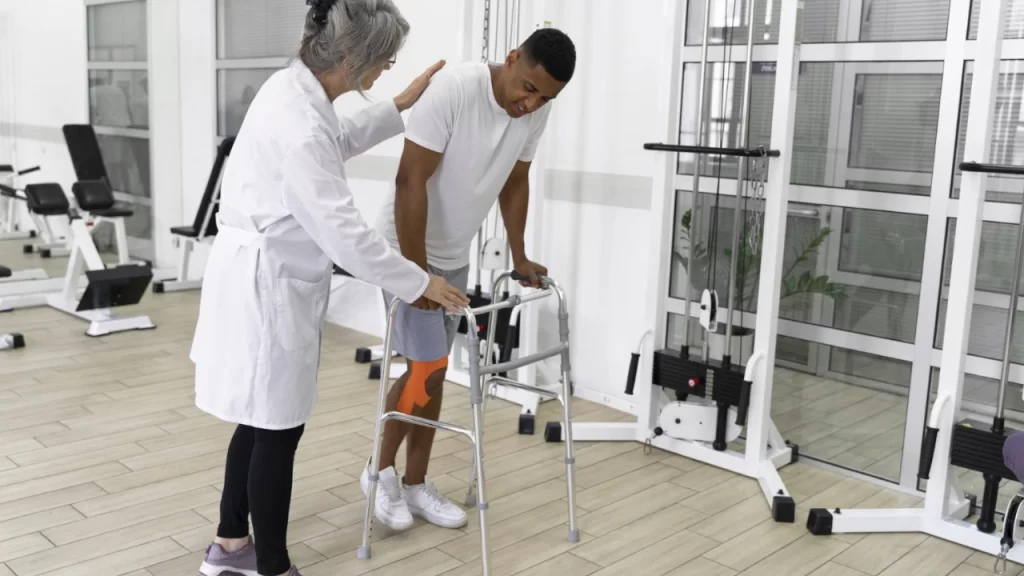Yes, occupational therapy is highly beneficial for hand and upper extremity rehabilitation. Occupational therapists specialize in evaluating and treating conditions that affect the hand, wrist, arm, and shoulder. They utilize various techniques and interventions to promote recovery, restore function, and enhance overall hand and upper extremity abilities. Here’s how occupational therapy can help with hand and upper extremity rehabilitation:
- Evaluation and Individualized Treatment: Occupational therapists conduct thorough evaluations to assess the individual’s specific needs, functional limitations, and goals related to hand and upper extremity rehabilitation. Based on the evaluation, they develop individualized treatment plans tailored to address the person’s unique challenges and promote optimal recovery.
- Range of Motion and Strengthening Exercises: Occupational therapists prescribe and guide individuals through range of motion exercises to restore flexibility, joint mobility, and muscle strength in the hand, wrist, arm, and shoulder. Strengthening exercises are utilized to improve muscle power and stability, allowing individuals to regain functional abilities.
- Manual Therapy Techniques: Occupational therapists employ various manual therapy techniques to address pain, swelling, stiffness, and scar tissue formation in the hand and upper extremity. These techniques may include soft tissue mobilization, joint mobilization, and manual stretching to improve tissue healing, range of motion, and overall function.
- Adaptive Strategies and Techniques: Occupational therapists teach individuals adaptive strategies and techniques to compensate for any hand or upper extremity impairments. These strategies may involve modifying daily activities, using adaptive equipment, and learning alternative movement patterns to accomplish tasks effectively and independently.
- Sensory Re-education: For individuals experiencing sensory deficits or changes following hand or upper extremity injuries, occupational therapists implement sensory re-education techniques. These interventions aim to improve sensory processing, discrimination, and integration, enhancing individuals’ ability to interpret and respond to sensory information accurately.
- Scar Management: In cases where individuals have undergone hand or upper extremity surgeries or suffered from injuries resulting in scars, occupational therapists provide scar management interventions. These may include scar massage, desensitization techniques, and application of specialized techniques or modalities to minimize scar tissue restrictions and improve tissue mobility.
- Functional Activities and Task-Specific Training: Occupational therapists incorporate functional activities and task-specific training into therapy sessions to help individuals regain skills necessary for daily living, work, and leisure activities. This may involve practicing activities such as dressing, grooming, writing, using utensils, and engaging in hobbies or sports that require hand and upper extremity coordination.
- Custom Splinting and Orthotic Fabrication: Occupational therapists have expertise in fabricating custom splints and orthotics to support and protect the hand and upper extremity during the healing process. These devices provide stability, alignment, and protection while allowing functional movement and promoting optimal recovery.
- Return-to-Work and Vocational Rehabilitation: Occupational therapists assist individuals in transitioning back to work or engaging in vocational activities following hand or upper extremity injuries. They provide work conditioning, ergonomic assessments, and recommend modifications or adaptive equipment to facilitate a safe and successful return to work.
Occupational therapy plays a crucial role in hand and upper extremity rehabilitation by addressing physical impairments, promoting functional abilities, and supporting individuals’ overall recovery and independence. Through a comprehensive and individualized approach, occupational therapists help individuals regain confidence, maximize their potential, and achieve optimal outcomes in hand and upper extremity rehabilitation.

